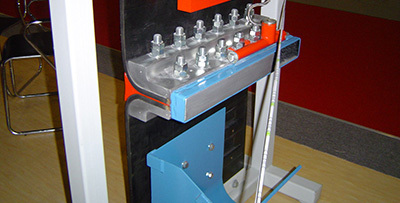News Center
Hezi technology focuses on the research and development of "rapid seamless conveyor belt joint sleeve" innovative technology project

NEWS CENTER

News Details
Effective Strategies for Conveyor Rubber Belt Fracture Repair
Release time:
2024-11-24
This article delves into the essential techniques for repairing fractures in conveyor rubber belts, providing valuable insights for professionals in the electrical and connector industries. Understand
Conveyor systems are critical components in various industrial applications, facilitating the movement of materials and products across production lines. However, wear and tear, along with operational stresses, can lead to fractures in conveyor rubber belts. Addressing these issues promptly and effectively is essential to maintain productivity and safety in operations.
When faced with a conveyor rubber belt fracture, it is important to first assess the extent of the damage. Minor fractures may be repairable, while extensive damage might necessitate belt replacement. A thorough inspection can help determine the most appropriate course of action.
For minor fractures, several repair techniques can be employed. One common method is using a rubber vulcanizing adhesive. This approach involves cleaning the damaged area, applying the adhesive, and then allowing it to cure. This method is particularly effective for smaller tears and can restore the integrity of the belt without requiring extensive downtime.
Another option for repairing conveyor rubber belts is the use of repair patches. These patches, typically made of high-quality rubber, can be bonded to the damaged area using a suitable adhesive. To ensure a strong bond, both the patch and the belt surface should be properly prepared, which may involve sanding and cleaning to remove any debris or contaminants.
In cases of larger fractures, the use of mechanical fasteners may be necessary. This technique involves cutting the damaged section of the belt and inserting a mechanical splice. This splice re-establishes the belt's continuity and is a reliable solution to ensure that the system can continue to operate without the risk of further damage.
Preventive measures can significantly reduce the likelihood of fractures occurring in the first place. Regular maintenance and inspections of conveyor systems are critical. Operators should routinely check for signs of wear, misalignment, and other issues that could lead to increased stress on the rubber belt. Additionally, ensuring that the conveyor operates within its designed parameters can help avoid unnecessary strain.
Moreover, investing in high-quality materials and components for conveyor systems can yield long-term benefits. Higher quality rubber belts are often engineered to withstand more wear and tear, thereby reducing the frequency of fractures and the associated repair costs.
In conclusion, understanding conveyor rubber belt fracture repair techniques is essential for professionals in the electrical and connector industries. By employing effective repair methods and implementing preventive measures, organizations can maintain operational efficiency, enhance safety, and prolong the lifespan of their conveyor systems.
When faced with a conveyor rubber belt fracture, it is important to first assess the extent of the damage. Minor fractures may be repairable, while extensive damage might necessitate belt replacement. A thorough inspection can help determine the most appropriate course of action.
For minor fractures, several repair techniques can be employed. One common method is using a rubber vulcanizing adhesive. This approach involves cleaning the damaged area, applying the adhesive, and then allowing it to cure. This method is particularly effective for smaller tears and can restore the integrity of the belt without requiring extensive downtime.
Another option for repairing conveyor rubber belts is the use of repair patches. These patches, typically made of high-quality rubber, can be bonded to the damaged area using a suitable adhesive. To ensure a strong bond, both the patch and the belt surface should be properly prepared, which may involve sanding and cleaning to remove any debris or contaminants.
In cases of larger fractures, the use of mechanical fasteners may be necessary. This technique involves cutting the damaged section of the belt and inserting a mechanical splice. This splice re-establishes the belt's continuity and is a reliable solution to ensure that the system can continue to operate without the risk of further damage.
Preventive measures can significantly reduce the likelihood of fractures occurring in the first place. Regular maintenance and inspections of conveyor systems are critical. Operators should routinely check for signs of wear, misalignment, and other issues that could lead to increased stress on the rubber belt. Additionally, ensuring that the conveyor operates within its designed parameters can help avoid unnecessary strain.
Moreover, investing in high-quality materials and components for conveyor systems can yield long-term benefits. Higher quality rubber belts are often engineered to withstand more wear and tear, thereby reducing the frequency of fractures and the associated repair costs.
In conclusion, understanding conveyor rubber belt fracture repair techniques is essential for professionals in the electrical and connector industries. By employing effective repair methods and implementing preventive measures, organizations can maintain operational efficiency, enhance safety, and prolong the lifespan of their conveyor systems.

Recommend News





























